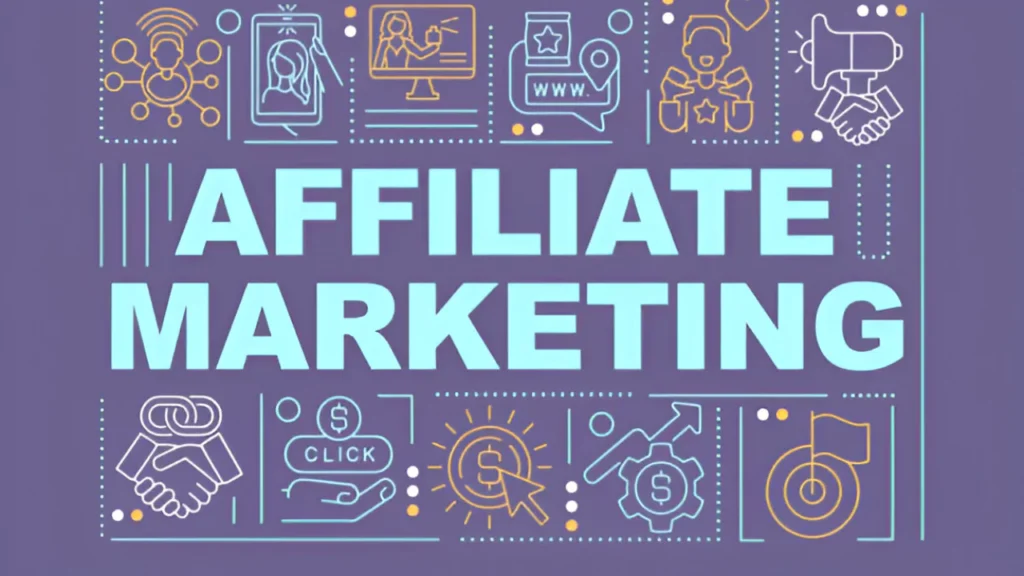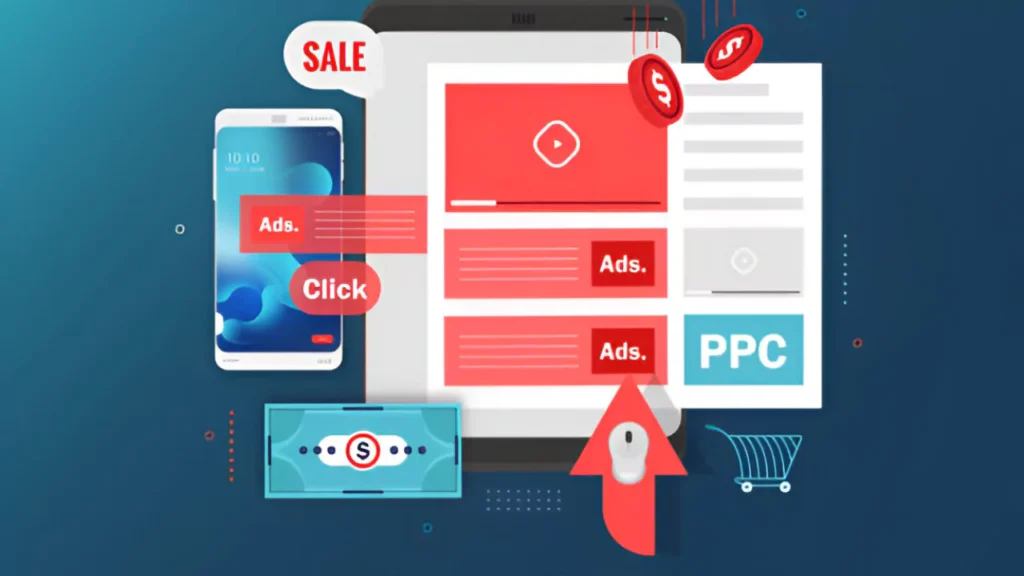7 Revenue Streams Every Blogger Should Consider
🎯 Are you a blogger looking to turn your passion into a profitable venture? You’ve put in countless hours crafting engaging content, but your bank account doesn’t reflect your hard work. It’s time to change that!
Imagine waking up to Multiple income streams flowing into your account while you sleep. 💰 The world of blogging offers numerous opportunities to monetize your skills and audience, but many bloggers struggle to identify and implement these lucrative strategies. In this post, we’ll unveil 7 Revenue Streams Every Blogger Should Consider, from Affiliate marketing to freelance services. Whether you’re a newbie or a seasoned blogger, these proven methods will help you diversify your income and build a sustainable Online business. Ready to transform your blog from a hobby to a thriving enterprise? Let’s dive in!
Affiliate Marketing: Earn Commissions

Now that we’ve explored various revenue streams for bloggers, let’s dive into one of the most popular and lucrative options: Affiliate marketing. This strategy allows you to earn commissions by promoting products or services that align with your blog’s niche and audience interests.
A. Choose relevant products
Selecting the right products for your Affiliate marketing efforts is crucial for success. Here are some key considerations:
- Relevance to your niche
- Quality and reputation of the product
- Commission rates and payout structures
- Audience demand and interest
| Consideration | Importance | Example |
|---|---|---|
| Relevance | High | Fashion blogger promoting clothing brands |
| Quality | Medium | Recommending products with positive reviews |
| Commission | Medium | Prioritizing programs with higher rates |
| Audience Demand | High | Tech blogger promoting latest gadgets |
B. Create compelling content
To effectively promote affiliate products, you need to create Engaging and valuable content that resonates with your audience. Consider these content types:
- Product reviews
- Comparison articles
- How-to guides featuring the product
- Personal success stories
- Gift guides or curated lists
Remember to maintain authenticity and transparency in your content to build trust with your readers.
C. Optimize placement of affiliate links
Strategic placement of affiliate links can significantly impact your conversion rates. Here are some best practices:
- Incorporate links naturally within your content
- Use eye-catching call-to-action buttons
- Place links in prominent locations (e.g., sidebar, end of posts)
- Experiment with different anchor texts
- Consider using link cloaking for cleaner URLs
D. Track and analyze performance
To maximize your Affiliate marketing revenue stream, it’s essential to monitor and analyze your performance regularly. Key metrics to track include:
- Click-through rates (CTR)
- Conversion rates
- Total revenue generated
- Top-performing products and content
Use this data to refine your strategy, focusing on what works best for your audience and blog niche.
By implementing these Affiliate marketing strategies, you can create a significant revenue stream for your blog. Remember to always prioritize your audience’s needs and interests to maintain credibility and long-term success. In the next section, we’ll explore another popular monetization method: display advertising.
Display Advertising: Monetize Your Traffic

Now that we’ve explored affiliate marketing, let’s dive into another popular revenue stream for bloggers: Display advertising. This method allows you to monetize your website traffic by displaying ads to your visitors. Here’s how you can effectively implement display advertising while maintaining a positive user experience.
Google AdSense Implementation
Google AdSense is one of the most popular and accessible Display advertising platforms for bloggers. Here’s a quick guide to getting started:
- Sign up for a Google AdSense account
- Add the AdSense code to your website
- Customize ad placements and styles
- Monitor performance and optimize
| Pros of Google AdSense | Cons of Google AdSense |
|---|---|
| Easy to set up | Lower revenue share |
| Automatic ad matching | Less control over ads |
| Wide range of ad types | Potential for irrelevant ads |
Private Ad Partnerships
For bloggers with significant traffic, partnering directly with advertisers can be more lucrative than using ad networks. Here’s how to approach private ad partnerships:
- Identify potential advertisers in your niche
- Create a media kit showcasing your traffic and audience demographics
- Reach out to companies with personalized pitches
- Negotiate rates and terms
Ad Network Alternatives
While Google AdSense is popular, there are several other ad networks worth considering:
- Media.net: Known for contextual ads
- AdThrive: Tailored for lifestyle bloggers
- Ezoic: Uses AI to optimize ad placements
- Mediavine: Focuses on food, travel, and lifestyle niches
Each network has its requirements and benefits, so research thoroughly to find the best fit for your blog.
Balancing User Experience with Ad Placement
Effective ad placement is crucial for maximizing revenue without compromising user experience. Consider these best practices:
- Avoid ad clutter: Limit the number of ads per page
- Use responsive ad units that adapt to different screen sizes
- Experiment with different ad sizes and placements
- Implement lazy loading for ads to improve page load times
- Use heatmaps to identify high-engagement areas for optimal ad placement
| Ad Placement Area | Effectiveness | User Experience Impact |
|---|---|---|
| Above the fold | High | Moderate |
| In-content | Medium | Low |
| Sidebar | Low to Medium | Low |
| Footer | Low | Minimal |
By strategically implementing display advertising, you can create a significant revenue stream from your blog traffic. Remember to continuously monitor and optimize your ad performance to maximize earnings while maintaining a positive user experience.
Next, we’ll explore how you can collaborate with brands through sponsored content, opening up even more opportunities to monetize your blog.
Sponsored Content: Collaborate with Brands

Sponsored content is one of the most lucrative revenue streams for bloggers. By partnering with brands, bloggers can create content that promotes a product, service, or campaign in exchange for compensation. This collaboration allows brands to reach a blogger’s audience authentically while providing bloggers with a stable source of income. Sponsored posts are often seen as a win-win, as they combine the brand’s message with the blogger’s unique voice.
Why Sponsored Content Works
- Monetization Opportunity: Sponsored content allows you to earn money without creating your product or service. Brands compensate you for featuring their products or services in your blog posts, social media, or other channels.
- Trust-Based Marketing: When done correctly, sponsored content resonates well with your audience because it’s perceived as an endorsement from a trusted source—you. According to research by Bloglovin, 67% of bloggers said they prefer working with brands to create sponsored content because it allows them to stay authentic while generating income.
- Targeted Exposure for Brands: Bloggers can offer brands access to a highly targeted audience. Brands are willing to pay for this niche exposure, knowing that readers are more likely to engage with content tailored to their interests.
Statistics on Sponsored Content
- Influencer marketing industry value: The influencer marketing industry is projected to reach $21.1 billion in 2023, driven in part by the popularity of sponsored content on blogs and social media platforms. Source
- Revenue potential: Bloggers with an audience size between 10,000 and 50,000 followers can earn between $200 and $1,000 per sponsored post. Top-tier influencers with over 500,000 followers can command $10,000 or more per post.
| Sponsored Content Type | Description | Potential Earnings |
| Blog Posts | A written article on your blog featuring a brand’s product or service. | $200 – $2,000+ per post |
| Social Media Posts | Sponsored images, videos, or posts on platforms like Instagram or Twitter. | $100 – $10,000+ depending on followers |
| Sponsored Videos | Video content that highlights a brand or product, often shared on YouTube. | $500 – $20,000+ per video |
| Giveaways/Contests | Hosting a contest or giveaway on behalf of a brand. | $300 – $1,500+ depending on engagement |
How to Attract Brand Collaborations
- Build a Niche Audience: Brands are more likely to collaborate with bloggers who have a defined, engaged audience that aligns with their target market. Focus on cultivating a loyal following in your niche to become attractive to potential sponsors.
- Pitch Effectively: Be proactive by reaching out to brands with a clear proposal on how you can provide value. Include your blog’s analytics, audience demographics, and examples of past collaborations to make your pitch stronger.
- Create Authentic, High-Quality Content: Brands want to be associated with high-quality, authentic content. Ensure that your sponsored posts maintain the same level of quality as your organic posts to keep your audience engaged.
- Utilize Sponsored Content Platforms: Many bloggers find partnerships through influencer marketing platforms like AspireIQ and Influence.co. These platforms connect bloggers with brands looking for influencers in specific niches.
Balancing Authenticity and Sponsorship
It’s essential to strike a balance between promoting sponsored products and maintaining authenticity. Readers can easily tell when a post feels inauthentic, which can harm your credibility.
As Krista Neher, author and digital marketing expert, puts it:
Sponsored content should feel like a natural extension of your blog. The more seamless and authentic the integration, the more effective it will be for both you and the brand
This is why it’s crucial to only partner with brands that align with your values and resonate with your audience.
Disclosure and Transparency
Transparency is key when it comes to sponsored content. Not only is it a legal requirement in many countries, but it also fosters trust with your readers. According to the Federal Trade Commission (FTC), bloggers are required to disclose sponsored posts to ensure readers understand that the content is paid for. Learn more about FTC guidelines here.
Digital Products: Create and Sell Your Own

Selling digital products is a fantastic way for bloggers to generate passive income. Unlike physical products, digital products are easy to create, distribute, and scale without ongoing production or shipping costs. With the right strategy, you can turn your expertise and content into profitable digital assets that continuously generate revenue.
Why Digital Products Are a Strong Revenue Stream
- Low Overhead: Once a digital product is created, the cost of distribution is minimal. There are no production or shipping fees, making it a highly profitable venture.
- Scalability: Digital products can be sold to an unlimited number of customers without additional effort. As you grow your audience, your revenue potential increases without needing to invest in additional resources.
- Passive Income: After the initial creation, digital products can continue to generate sales without requiring much ongoing work, making them an excellent source of passive income.
| Digital Product Type | Description | Revenue Potential |
| E-books | In-depth guides or books on a specific topic, often related to your blog niche. | $10 – $100 per e-book |
| Online Courses | Structured learning materials delivered through video, text, or quizzes. | $50 – $500+ per course |
| Printable Downloads | PDF templates, planners, checklists, or artwork that readers can download and print. | $5 – $50 per download |
| Stock Photos/Graphics | High-quality photos, illustrations, or design elements available for others to use in their own projects. | $10 – $100+ per package |
| Membership Content | Exclusive content or community access offered through a membership or subscription model. | $10 – $100+ per month |
Statistics on Digital Product Sales
- Online course market: The global online education market is projected to reach $325 billion by 2025, largely driven by the demand for digital learning products. Source
- E-books: By 2026, the revenue generated from e-book sales worldwide is expected to reach $15.66 billion, showcasing a strong demand for self-published digital content. Source
How to Create and Sell Digital Products
- Identify Your Niche and Audience Needs: The first step in creating a successful digital product is to understand your audience’s pain points or interests. What problems are they trying to solve, and how can you address them with a product?
- Choose a Platform: There are several platforms available to sell digital products, each with its advantages:
- Etsy: Ideal for selling printable downloads, templates, and artwork. Learn more here
- Teachable or Thinkific: Perfect for bloggers looking to create and sell online courses. These platforms allow you to host video lessons, quizzes, and more. Teachable, Thinkific
- Amazon Kindle Direct Publishing: A leading platform for selling e-books to a global audience. Learn more here
- Focus on Quality: Your digital product should be high-quality, both in terms of content and presentation. Whether it’s an e-book or an online course, ensure it provides real value to your audience.
- Set the Right Price: Pricing can significantly impact sales. Research competitors in your niche and consider your audience’s willingness to pay. Offering different pricing tiers (e.g., basic and premium versions) can help capture a wider audience.
- Market Your Product: Once your product is ready, promote it through various channels:
- Email marketing: Reach out to your email subscribers with exclusive offers.
- Social media: Use platforms like Instagram, Twitter, or Pinterest to showcase your product’s benefits.
- Your blog: Write dedicated blog posts that demonstrate the value of your digital products, using SEO techniques to drive traffic.
Digital Product Success Stories
Countless bloggers have turned digital products into thriving revenue streams. A notable example is Abby Lawson from Just a Girl and Her Blog, who generates six figures annually from selling e-books and printables related to organization and home management. Source
The Power of Passive Income
By creating something once, and getting paid for it repeatedly, you build a source of passive income that works for you around the clock
Coaching and Consulting: Monetize Your Expertise

For bloggers with deep knowledge in a particular niche, offering coaching or Consulting services can be an incredibly lucrative way to monetize your expertise. Whether it’s one-on-one sessions, group coaching, or personalized consultations, this revenue stream allows you to work directly with clients, offering tailored advice, solutions, and strategies based on your specialized skills and experience.
Why Coaching and Consulting Is a Valuable Revenue Stream
- High Earning Potential: Coaching and consulting typically come with higher price points compared to other forms of monetization. Clients are willing to pay a premium for personalized advice and actionable strategies.
- Personal Connection: Unlike passive income streams, coaching and consulting involve direct interaction with your audience, allowing you to build strong relationships and a loyal client base.
- Scalability Options: While one-on-one coaching might be limited in scale, you can offer group coaching, webinars, or online consulting sessions to reach a wider audience and increase your earnings.
Statistics on Coaching and Consulting
- Coaching industry growth: The coaching industry has experienced significant growth and is projected to reach $20 billion by 2026. This growth is fueled by increasing demand for personal and professional development across various sectors.
- Earning potential: On average, life coaches charge between $100 and $500 per hour, while business consultants can earn $5,000 or more per project, depending on their expertise and client needs.
Steps to Start Offering Coaching and Consulting
- Identify Your Niche and Audience: To succeed in coaching or consulting, it’s essential to focus on a specific niche. Whether it’s business strategy, wellness, personal development, or blogging itself, you need to clearly define what expertise you’ll offer and who will benefit from it.
- Create a Service Page: Dedicate a page on your blog outlining your coaching or consulting services. Highlight your qualifications, experience, and what clients can expect from your sessions. Be transparent about pricing, available packages, and how potential clients can get in touch with you.
- Use Calendars and Booking Tools: Automate the process of booking consultations using tools like Calendly or Acuity Scheduling. These platforms allow clients to view your availability, book sessions, and even pay upfront.
- Offer Free Consultations or Webinars: To attract clients, consider offering a free consultation or a webinar as a lead magnet. This allows potential clients to experience your expertise before committing to a paid session.
- Collect and Display Testimonials: Social proof is crucial in the coaching and consulting industry. After working with clients, ask for testimonials and showcase them on your service page. Positive reviews help build trust and credibility.
How to Price Your Coaching or Consulting Services
Pricing depends on your experience, niche, and client base. When setting your rates, consider the following:
- Experience: If you’re new to coaching, you may want to start with lower rates to build a client base. As you gain experience and success stories, you can gradually increase your rates.
- Market Research: Investigate what other coaches or consultants in your niche are charging. Platforms like Clarity.fm and Coach.me can help you understand industry standards.
- Value Proposition: If your coaching delivers high value (e.g., helping clients achieve substantial personal or financial growth), you can charge premium rates.
Success Stories in Coaching and Consulting
Numerous bloggers have turned their expertise into highly successful coaching businesses. For example, Melyssa Griffin, a popular blogger and entrepreneur, leveraged her experience in online marketing to offer group coaching and workshops. Her coaching business eventually grew to six figures, with Melyssa providing both personalized and group consulting services. Source
The Value of Mentorship
As renowned author and leadership expert, John C. Maxwell once said:
“A mentor is someone who sees more talent and ability within you than you see in yourself, and helps bring it out of you.”
This quote captures the essence of coaching and consulting—helping others reach their full potential by offering guidance and sharing your expertise.
Membership Sites: Build a Recurring Revenue Model
Membership sites allow bloggers to build a consistent and predictable income stream by offering exclusive content or services to paying members. Rather than relying on one-time purchases or ads, a membership model focuses on providing ongoing value to subscribers in exchange for a recurring fee. This can be an incredibly effective way to monetize your blog and foster a deeper connection with your most engaged audience.
Why Membership Sites Are a Strong Revenue Model
- Predictable Income: Unlike one-off purchases, membership sites generate recurring revenue, which can offer more financial stability. Knowing that you have a consistent income stream can make it easier to plan and grow your business.
- Increased Engagement: Members who are paying for access to exclusive content or community features are more likely to engage with your blog, allowing you to build a loyal, active community around your brand.
- Value Perception: Exclusive content, premium resources, or personal interactions can increase the perceived value of your blog. Memberships offer a sense of exclusivity, encouraging readers to feel like they are part of an inner circle.
Types of Membership Models
| Membership Model Type | Description | Potential Earnings |
| Content-Driven | Members gain access to premium articles, tutorials, courses, or videos that are not available publicly. | $10 – $50+ per month per member |
| Community-Based | Access to private forums, masterminds, or live Q&A sessions where members can network and share ideas. | $15 – $100+ per month per member |
| Service-Oriented | Provides ongoing personalized coaching, consulting, or exclusive tools for members. | $50 – $500+ per month per member |
| Hybrid Model | Combines content and community, offering members both premium content and access to private interactions. | $20 – $150+ per month per member |
Statistics on the Membership Economy
- Global Subscription Market: The subscription economy is expected to reach $1.5 trillion by 2025, driven by consumer demand for personalized, on-demand content. Source
- Membership Growth: According to a 2022 report, 23% of content creators generate revenue through membership sites, underscoring their popularity as a monetization method.
Steps to Build a Successful Membership Site
- Identify Your Audience and Niche: The success of a membership site hinges on knowing exactly who your target audience is and what exclusive value you can offer them. Whether it’s premium content, tutorials, or a community experience, understanding your audience’s needs will shape the structure of your membership model.
- Choose a Platform: Several platforms allow bloggers to create and manage membership sites easily:
- Patreon: A popular platform for creators offering tiered memberships with varying levels of exclusive content and rewards. Learn more here
- MemberPress: A WordPress plugin that integrates seamlessly into your blog, allowing you to lock premium content behind paywalls. Learn more here
- Kajabi: A robust platform for content creators looking to offer courses, memberships, and community features. Learn more here
- Create Exclusive Value: Your membership site should offer content or services that are not available anywhere else. This could include:
- Premium articles, tutorials, or videos
- Early access to blog posts or exclusive downloads
- Private forums or communities where members can interact
- Live Q&A sessions, webinars, or coaching calls
- Set Membership Tiers: Consider offering multiple membership levels to appeal to a wider audience. For example, a basic tier could provide access to premium content, while a higher tier might include direct access to you through live events or personalized advice.
| Membership Tier | Benefits | Price |
|---|---|---|
| Basic | Access to premium content only | $10 per month |
| Pro | Premium content + private community | $30 per month |
| VIP | All access + personalized coaching | $100+ per month |
- Engage and Retain Members: Regularly engage with your members through newsletters, live events, or personalized content to keep them interested and subscribed. Use analytics tools to monitor member behavior and feedback to continuously improve the experience.
Membership Success Stories
A great example of success in the membership model is Tim Ferriss, author, and entrepreneur, who offers exclusive content and access to his community through his private membership program. Ferriss provides behind-the-scenes insights, live webinars, and special interviews that keep his subscribers engaged and willing to pay for premium access. Source
The Power of Memberships
In the words of Robbie Kellman Baxter, author of The Membership Economy:
“A membership model puts the customer at the center of your business, driving engagement, loyalty, and recurring revenue.”
This quote captures the essence of building a Successful membership site: providing continuous value and nurturing relationships with your members leads to long-term growth and financial stability.
Freelance Services: Leverage Your Skills

As a blogger, you’ve likely developed a unique set of skills that can be valuable beyond your blog. Offering freelance services is an excellent way to monetize these skills while building your brand and reputation within your niche. From writing and content creation to SEO consulting and social media management, freelancing offers flexibility and a direct way to earn income from your expertise.
Why Freelance Services Are a Strong Revenue Stream
- Immediate Income: Unlike Passive income streams that may take time to grow, freelancing allows you to start earning money right away by providing services that are in demand.
- Flexibility: As a freelancer, you have the freedom to choose your clients, set your rates, and work on projects that align with your interests and skills.
- Portfolio Growth: Every freelance project you complete can become a part of your portfolio, showcasing your expertise and making it easier to attract future clients.
- Networking Opportunities: Freelancing can introduce you to new connections and potential long-term collaborations that could benefit your blog or future projects.
Statistics on Freelance Work
- Freelancing Growth: As of 2023, nearly 60 million Americans are freelancing, contributing over $1.3 trillion to the U.S. economy annually.
- Freelance Income Potential: According to a survey by Freelancer’s Union, 30% of freelancers earn over $100,000 per year by offering services in writing, design, and consulting.
How to Start Offering Freelance Services
- Identify Your Skills: Begin by listing your strengths and skills. Whether you’re a seasoned writer or SEO expert, or have a knack for social media, pick services that align with your expertise and interests.
- Create a Service Page on Your Blog: Dedicate a page on your blog to promote your freelance services. Include your portfolio, a list of services you offer, testimonials from past clients, and a clear call to action (CTA) for potential clients to reach out.
- Set Competitive Pricing: Research what other freelancers in your niche are charging. Pricing can vary based on your experience, the complexity of the task, and the client’s budget. It’s helpful to offer tiered packages to cater to different client needs.
| Package | Service Description | Price |
|---|---|---|
| Starter Package | Basic blog post (500-800 words) with one revision. | $150 |
| Advanced Package | Comprehensive SEO article (1,500+ words) with research. | $500+ |
| Consulting Package | One-hour content strategy or SEO consulting session. | $100 per hour |
- Leverage Freelance Platforms: While promoting services on your blog is essential, freelancing platforms like Upwork, Fiverr, and Freelancer can help you find clients quickly. These platforms offer visibility to a broader client base, and you can gradually raise your rates as you build your portfolio and reputation.
- Market Your Services: Use your blog and social media channels to promote your freelance services. You can also create case studies, write blog posts showcasing your skills, and ask satisfied clients for testimonials to help attract more business.
Success Story: Turning Blogging into a Freelance Career
Take Elna Cain, for example, a blogger who turned her writing skills into a six-figure freelance writing business. Elna leveraged her blog to showcase her expertise, land clients, and build a loyal client base. Today, she offers freelance writing services and coaching to help other aspiring freelancers get started. Learn more here
The Importance of Freelancing for Bloggers
Freelancing allows you to turn your blogging skills into a reliable revenue stream. As Seth Godin, a renowned marketer, once said:
“Freelancing is the single easiest way to start a business. All you need is a talent, a willing client, and the guts to ask for the money.”
In today’s digital landscape, blogging offers an abundance of revenue-generating opportunities, and diversifying your income streams is key to long-term success. Whether you choose to collaborate with brands through sponsored content, sell your own digital products, or offer personalized coaching and consulting, each revenue stream can provide unique benefits and help you grow your blog’s profitability.
By exploring options such as affiliate marketing, membership sites, and even ad revenue, you can create a well-rounded strategy that caters to your audience’s needs while ensuring consistent earnings. The key is to focus on delivering value, building strong relationships with your readers, and continuously adapting your monetization strategy as your blog grows.
Remember, success in blogging doesn’t come overnight, but with persistence, experimentation, and a diversified revenue model, you’ll be well on your way to achieving your financial and blogging goals. So take the time to explore these seven revenue streams and start integrating the ones that align with your blog’s vision and audience today!








Thank you for your sharing. I am worried that I lack creative ideas. It is your article that makes me full of hope. Thank you. But, I have a question, can you help me?
I don’t think the title of your article matches the content lol. Just kidding, mainly because I had some doubts after reading the article.